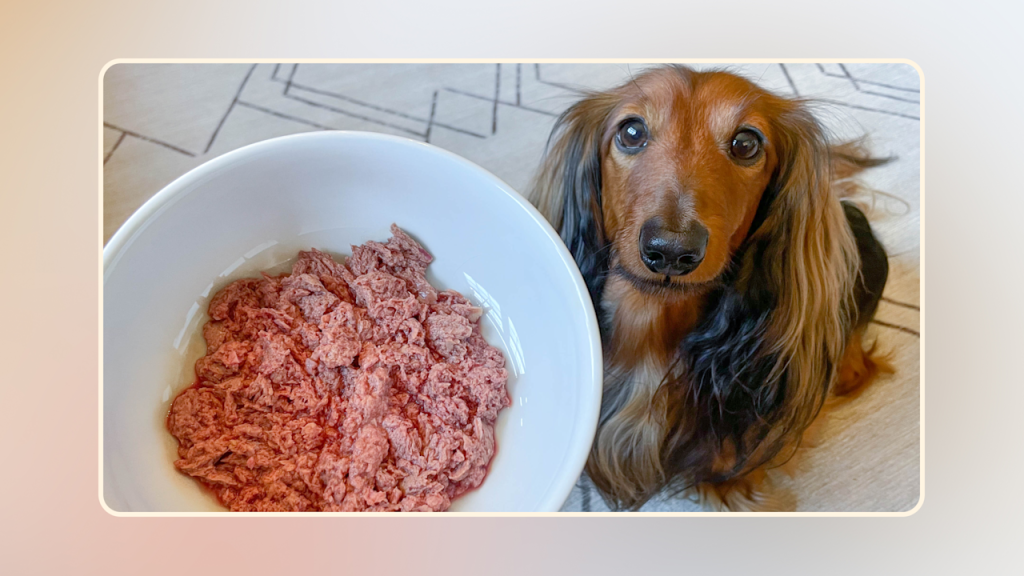How to Identify Food Allergies in Pets and Adjust Their Diet

The Complex Nature of Food Allergies in Pets
For many pet owners in the United States, food allergies in pets can be a complex and confusing concern. As our pets cannot communicate verbally, understanding their needs and discomfort is crucial to maintaining their health and happiness. Food allergies may manifest in various ways, and recognizing the signs is the first step towards enhancing your pet’s quality of life. With the right understanding and dietary adjustments, you have the power to alleviate your furry friend’s discomfort significantly.
Identifying Common Symptoms of Food Allergies
It’s essential to be vigilant when monitoring your pet’s health. Common symptoms of food allergies can give you vital clues about what might be troubling your pet. Here are some indicators to watch for:
- Skin Irritation: Look for signs such as redness, itching, or rashes on the skin. These symptoms may appear in areas where your pet can reach or around the face and ears. In severe cases, skin infections may develop due to incessant scratching.
- Digestive Issues: Symptoms like vomiting, diarrhea, or excessive flatulence can indicate food allergies. For example, if your dog experiences recurrent gastrointestinal upset after eating a specific type of food, it may be worth investigating.
- Ear Infections: Frequent ear problems, including itching or discharge, can indicate underlying allergies. Pets with food allergies may develop chronic ear infections, leading to discomfort and additional health complications if not addressed.
Recognizing these symptoms is vital for discovering the root causes of your pet’s discomfort. Keeping a detailed log of your pet’s behavior and health changes after consuming different foods can help you pinpoint potential allergens more effectively.
Adjusting Your Pet’s Diet
Once you suspect that your pet may have a food allergy, adjusting their diet is a critical next step. Here are some strategies to consider:
- Consult a Veterinarian: A veterinary professional can help identify specific allergens through tests and guides you through the diet modification process. Their expertise ensures that you make informed decisions tailored to your pet’s unique health needs.
- Food Elimination Trials: Conducting an elimination trial involves gradually removing potential allergens from your pet’s diet and observing any changes in their condition. This process can take several weeks, during which you may need to track your pet’s response to eliminated and reintroduced food types.
- Quality Ingredients: Focus on high-quality, limited-ingredient pet foods that minimize exposure to common allergens. Brands that emphasize transparency about sourcing and production can often be more trustworthy choices for pet owners.
Throughout this journey, your observations and actions are crucial. By remaining attentive to your pet’s dietary intake and any subsequent responses, you can make informed decisions that significantly improve their well-being. Remember, the goal is to foster a happier, healthier life for your beloved companion.

DISCOVER MORE: Click here to learn about balanced nutrition
Understanding Food Allergies in Pets
To truly help your furry companion, identifying food allergies is the first step in a potentially life-changing journey. Pets, like humans, can develop sensitivities to certain ingredients, often resulting from repeated exposure. As pet owners, our understanding of these allergies can significantly impact the health and comfort of our animals.
Common Types of Food Allergens
Food allergies in pets frequently stem from proteins or other food components present in their diet. Understanding the common culprits can help narrow down the search for the source of your pet’s discomfort:
- Beef: This is one of the most common protein sources in pet foods and can lead to allergic reactions in some dogs.
- Dairy: While many pets may tolerate small amounts of dairy, lactose intolerance is prevalent, and full-blown allergies can occur.
- Wheat: Grain-based ingredients, particularly wheat, can harbor proteins that some pets’ immune systems reject, resulting in allergic responses.
- Poultry: Chicken and turkey are frequent ingredients in pet food, but they can also be sources of allergies, particularly in long-term feeds.
- Fish: Although often hailed as a hypoallergenic option, some pets can paradoxically develop allergies to fish proteins.
It’s also worth noting that pets can have multiple food sensitivities, further complicating diagnosis. In some cases, even preservatives or additives in processed dog foods can trigger allergic reactions.
The Role of Genetics and Environment
Pet allergies are not purely a result of diet; they can also stem from environmental influences and genetic predisposition. Certain breeds are more prone to developing food allergies. For instance, Labrador Retrievers, Golden Retrievers, and Cocker Spaniels are known to be at a higher risk. Furthermore, if your pet has a history of other allergies, such as environmental allergens like pollen or dust mites, they may also be more susceptible to food allergies.
Being aware of these connections can empower pet owners to take proactive measures. Conducting periodic assessments of your pet’s health and behavior can be immensely beneficial. Regular interaction with your veterinarian allows for a more tailored approach to your pet’s dietary needs and helps maintain their overall wellness.
Documenting Your Pet’s Health Journey
Keeping a detailed diary of your pet’s diet, symptoms, and any behavioral changes is crucial in identifying food allergies. By tracking what your pet eats and noting any negative reactions, you can create a more comprehensive profile that aids your vet in identifying potential allergens. Consider documenting factors such as:
- The specific food brands and ingredients your pet consumes
- Occurrences of any symptoms like itching, vomiting, or diarrhea
- The timing and duration of symptoms in relation to food intake
By meticulously documenting these factors, you lay the groundwork for a solution that includes the right dietary adjustments, ultimately leading to a healthier, more comfortable life for your beloved pet.
| Category | Details |
|---|---|
| Symptoms of Food Allergies | Look for signs such as itching, gastrointestinal upset, or skin irritations. |
| Elimination Diet | Gradually introduce new foods while removing potential allergens to identify sensitivities. |
| Keep a Food Diary | Document your pet’s diet and related symptoms to assist in pinpointing allergens. |
| Consult with a Veterinarian | Engage with a professional for advice tailored specifically to your pet’s dietary needs. |
Identifying food allergies in pets can be an intricate process, requiring observation and adjustments to their diet. Common symptoms such as excessive scratching, ear infections, or digestive issues may suggest food sensitivities. One effective method to pinpoint these allergens is through an elimination diet, which involves removing specific ingredients from your pet’s meals and then gradually reintroducing them one at a time.Additionally, maintaining a food diary is highly beneficial. This method allows owners to track their pet’s food intake alongside any symptoms, which can clarify any correlations between diet and allergic reactions. As tackling food allergies can be challenging, consulting with a veterinarian is crucial. They can provide insights tailored to your pet’s unique situation and help create a balanced diet that accommodates their needs, ensuring a healthy and happy life.
Dive deeper: Click here for more insights
Conducting Elimination Trials
Once you suspect your pet has a food allergy, the next step is to perform an elimination trial. This method involves introducing a novel protein and carbohydrate source into your pet’s diet, which they have never eaten before. The idea is to remove common allergens completely and to allow the pet’s immune system to reset. Typically, elimination trials last around 8 to 12 weeks and require strict adherence to the new diet.
Choosing the Right Novel Diet
Selecting the right diet for an elimination trial is crucial. You may want to look for commercial diets labeled as “hypoallergenic” or “novel protein.” Options could include less common proteins such as venison, kangaroo, or even vegetarian options, depending on your pet’s health conditions. Grain-free options might also be worth considering, utilizing carbohydrates like sweet potatoes or peas instead of wheat or corn.
Homemade diets can be beneficial, but care must be taken to ensure the food is nutritionally balanced. Consultation with a veterinarian or a pet nutritionist is highly advisable when crafting a homemade diet to avoid nutrient deficiencies.
Monitoring and Analyzing Changes
During the elimination trial, it is imperative to monitor your pet closely. Keep an eye on their overall well-being, energy levels, and any change in symptoms. Improvement in symptoms—such as reduced itching or gastrointestinal issues—can indicate the removed allergen was previously causing the discomfort. However, if symptoms persist, it may be time to explore other dietary variables or underlying health concerns.
After the elimination period, reintroduce one ingredient or protein source at a time every 7 to 14 days, while continuing to observe your pet’s reactions. This systematic approach will help pinpoint specific allergens. It’s a tedious process, but one that can lead to a definitive diagnosis and a happier, healthier pet.
The Importance of Veterinary Guidance
Throughout this process, maintaining a close relationship with your veterinarian is essential. They can help interpret the results of the elimination trial and offer tailored advice on managing your pet’s food allergies going forward. Veterinarians may also recommend allergy testing, which can help identify sensitivities, although such tests are usually less definitive than the results from an elimination trial.
Considerations for Long-Term Management
Once food allergies are identified, long-term management is key. This could involve a permanent shift to a hypoallergenic diet or a strict avoidance of specific ingredients your pet may be allergic to. Always choose high-quality foods with clear ingredient labeling—this transparency can help prevent accidental exposure to allergens.
Moreover, consider supplements like omega fatty acids, which can support skin health and may reduce inflammatory responses triggered by allergies. Your veterinarian can guide you on appropriate supplements based on your pet’s unique needs.
Finally, always be vigilant about what your pet consumes. From treats to table scraps, maintaining a controlled diet is crucial in avoiding allergens that can lead to uncomfortable allergic reactions. With some diligence and the right adjustments, you can significantly improve your pet’s quality of life through effective dietary management.
DISCOVER MORE: Click here for in-depth insights
Conclusion
Identifying food allergies in pets is a journey that requires attentiveness, patience, and a systematic approach. From the initial signs of allergenic reactions, such as persistent itching or gastrointestinal distress, to the methodical process of conducting an elimination trial, gradual observation is essential to pinpoint the specific allergen causing discomfort. Choosing the right novel diet is critical, and it is advisable to consult with a veterinarian or a pet nutritionist to ensure nutritional balance throughout the process.
As you monitor your pet’s health and behavior over the elimination period, significant changes can indicate which ingredients to avoid moving forward. Remember, this kind of dietary adjustment doesn’t just alleviate symptoms; it significantly enhances your pet’s overall quality of life. Additionally, your veterinarian’s expertise is invaluable during this process, guiding you in interpreting results and creating a tailored, long-term management plan.
Ultimately, a well-informed approach can lead to successful management of food allergies in pets. Awareness of the ingredients in commercial pet foods, careful selection of treats, and potential supplementation can all contribute to your pet’s well-being. Your commitment to understanding and adapting your pet’s diet not only fosters a happy, healthy companion but also strengthens the bond you share. If you suspect your pet may have food allergies, consult with your veterinarian today and take the first step toward a more comfortable life for your furry friend.


